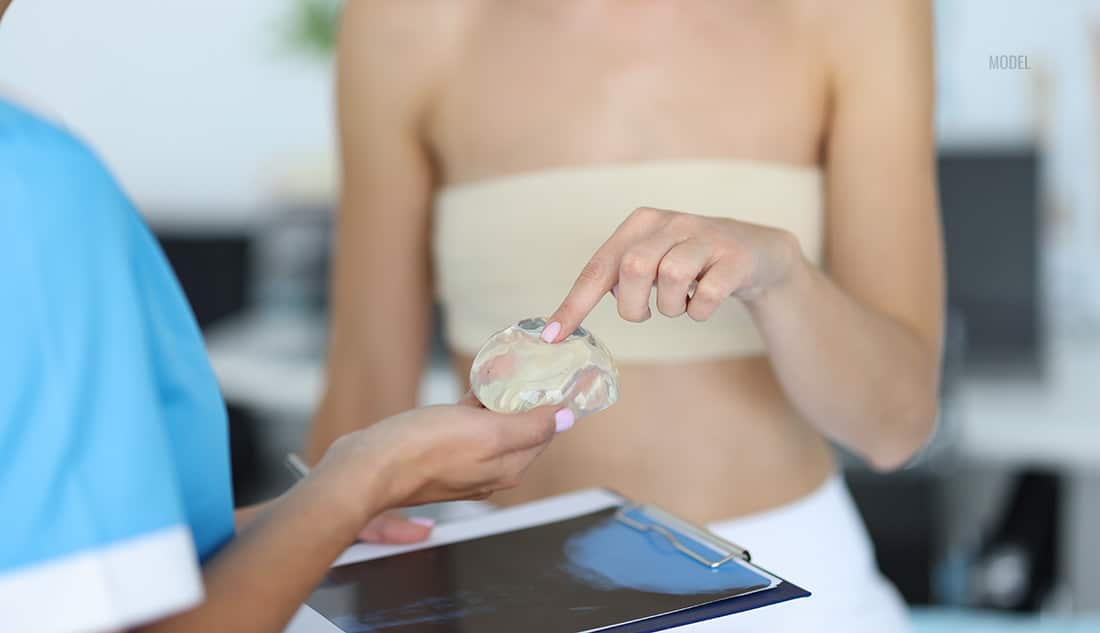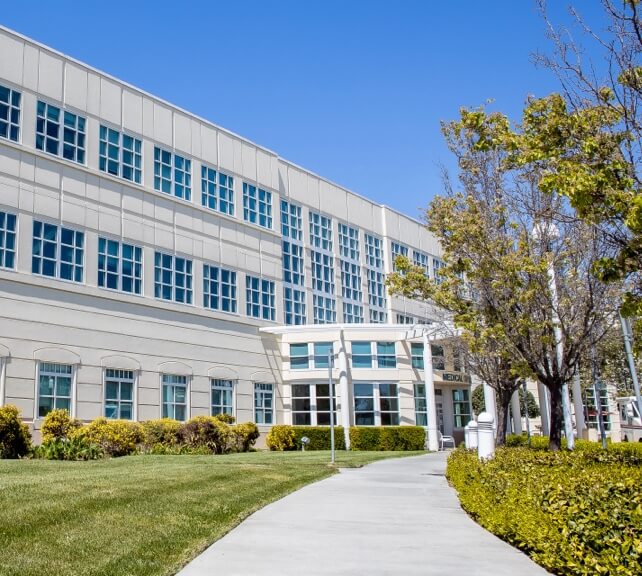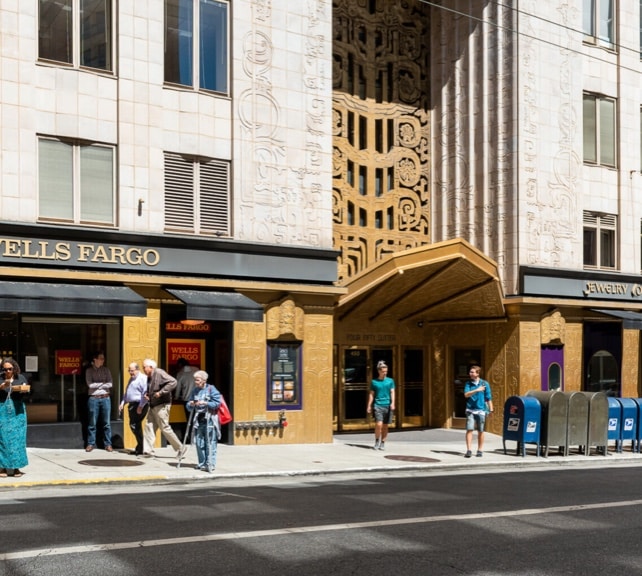Do Breast Augmentation Complications Always Require Implant Exchange?
Breast augmentation is one of the most commonly performed cosmetic procedures, with thousands of women seeking to enhance their bust size and shape each year. Breast augmentation surgery can achieve beautiful and satisfying results, but like any surgical procedure, it carries the risk of complications.This blog will explain circumstances in which original breast implants can be used during a breast augmentation revision and when they should be replaced.

5 Min Read:
The 5 Most Common Complications of Breast Augmentation
While the vast majority of augmentation procedures are successful, any surgery carries certain risks. Some are more cosmetic than anything else. For example, breast implants above the chest muscle may show under the skin, especially with saline options with very little natural breast tissue to cover them; this is called “rippling.” While breast implants don’t always need to be replaced when a minor complication like ripplings arises, surgery is typically required to change the placement of the implants.
Let’s examine five more common complications that can occur after breast augmentation surgery.
1. Capsular Contracture
This common complication is characterized by the formation of scar tissue (capsule) around the breast implant, causing it to become rigid, distorted, and sometimes painful.
2. Implant Rupture
A rupture is caused when the outer shell of a breast implant develops a tear or hole, allowing the implant’s contents (saline or silicone gel) to leak into the surrounding tissue.
3. Symmastia
This condition, also known as “uniboob” or “breadloafing,” occurs when the implants move too close together, creating a single, unified breast mound in the center of the chest.
4. Bottoming Out
The downward displacement of the breast implant is called bottoming out and causes the nipple-areola complex to sit too high on the breast mound and the implant to settle too low on the chest wall.
5. Double Bubble Deformity
A double bubble deformity happens when there is a visible indentation or crease beneath the breast mound, creating the appearance of two distinct breast contours.
Which Breast Augmentation Complications Require Implant Removal and Replacement?
The answer to this question depends on several factors, including the nature and severity of the complication, the patient’s goals and preferences, and the plastic surgeon’s recommendations.
Let’s explore some scenarios in which implant removal and replacement may or may not be necessary.
- Mild Capsular Contracture (Grade I or II)
In cases of mild capsular contracture where the breast implant is only slightly firm and not causing significant discomfort or distortion, conservative treatment options such as massage, oral medication, or non-surgical interventions like ultrasound therapy may be attempted before considering implant removal and replacement.
- Moderate to Severe Capsular Contracture (Grade III or IV)
In cases of moderate to severe capsular contracture where the breast implant is firm, painful, and causing visible distortion of the breast, surgical intervention may be necessary. This typically involves removing the implant, excising the thickened capsule, and replacing the implant with a new one.
- Saline Implant Rupture
In cases of saline implant rupture, the saline solution is harmlessly absorbed by the body, and the deflated implant can be easily removed and replaced during a straightforward revision surgery.
- Silicone Implant Rupture
When a silicone implant ruptures, the cohesive silicone gel may remain within the fibrous capsule (silent rupture) or migrate to surrounding tissues. If the patient experiences symptoms such as pain, swelling, or changes in breast shape, replacement is typically needed.
Periodic MRIs are advised to monitor silicone implants for silent ruptures. If imaging reveals a silent rupture or signs of silicone leakage, implant removal and replacement are recommended to address the rupture and prevent complications.
- Symmastia
With mild symmastia, the implants are only slightly close together and do not cause significant cosmetic concerns. Non-surgical interventions such as supportive bras or strategic padding may be used to improve breast symmetry.
However, surgical correction may be required if the symmastia is more pronounced and affects the aesthetic outcome. Revision procedures often involve removing the implants, repositioning the implant pockets, and securing the original or replacement implants with internal sutures to prevent a recurrence.
- Bottoming Out
In cases of mild bottoming out where the implant has only descended slightly below the inframammary fold, and the nipple-areola complex remains in a natural position, conservative measures such as wearing supportive bras or performing targeted exercises to strengthen the pectoral muscles may be recommended to improve breast support.
When bottoming out is more severe and results in noticeable asymmetry or distortion of the breast shape, surgical correction may be necessary, which usually involves reinforcing the lower breast tissue with internal sutures or using acellular dermal matrix (ADM) to provide additional support.
- Double Bubble Deformity
Mild double bubble deformity is when the indentation beneath the breast mound is minimal and does not cause significant aesthetic concerns. In these cases, conservative management options may be considered, such as supportive bras or fat grafting to camouflage the contour irregularity.
If the double bubble deformity is more pronounced and results in visible asymmetry or distortion of the breast shape, surgical correction may be necessary, which often involves adjusting the implant pocket, reshaping the breast tissue, and possibly replacing the implant with a different size or style to achieve a more natural contour.
What Is Breast Augmentation and Revision, in a Nutshell?
Breast augmentation complications can present challenges and often require implant removal and replacement, but thankfully, most breast implants come with a ten-year warranty. The decision to undergo revision surgery depends on various factors, including the nature and severity of the complication, the patient’s preferences, aesthetic goals, and the recommendations of their plastic surgeon.
In some cases, conservative management options or targeted interventions may be sufficient to address the complication and achieve satisfactory outcomes without needing implant removal and replacement.
However, in more severe or complex cases, surgical revision may be necessary to correct the issue and restore the desired result. Open communication between the patient and their plastic surgeon is essential to ensure that the approach aligns with expectations and goals for breast augmentation revision.
How Do I Learn More About Breast Revision Options in San Francisco, CA?
Dr. Miguel Delgado and his knowledgeable team invite you to call 415-989-2221 to reach his San Francisco office for a breast revision consultation. Dr. Delgado is an experienced and respected board-certified plastic surgeon who provides custom breast revision procedures in San Francisco, California.



